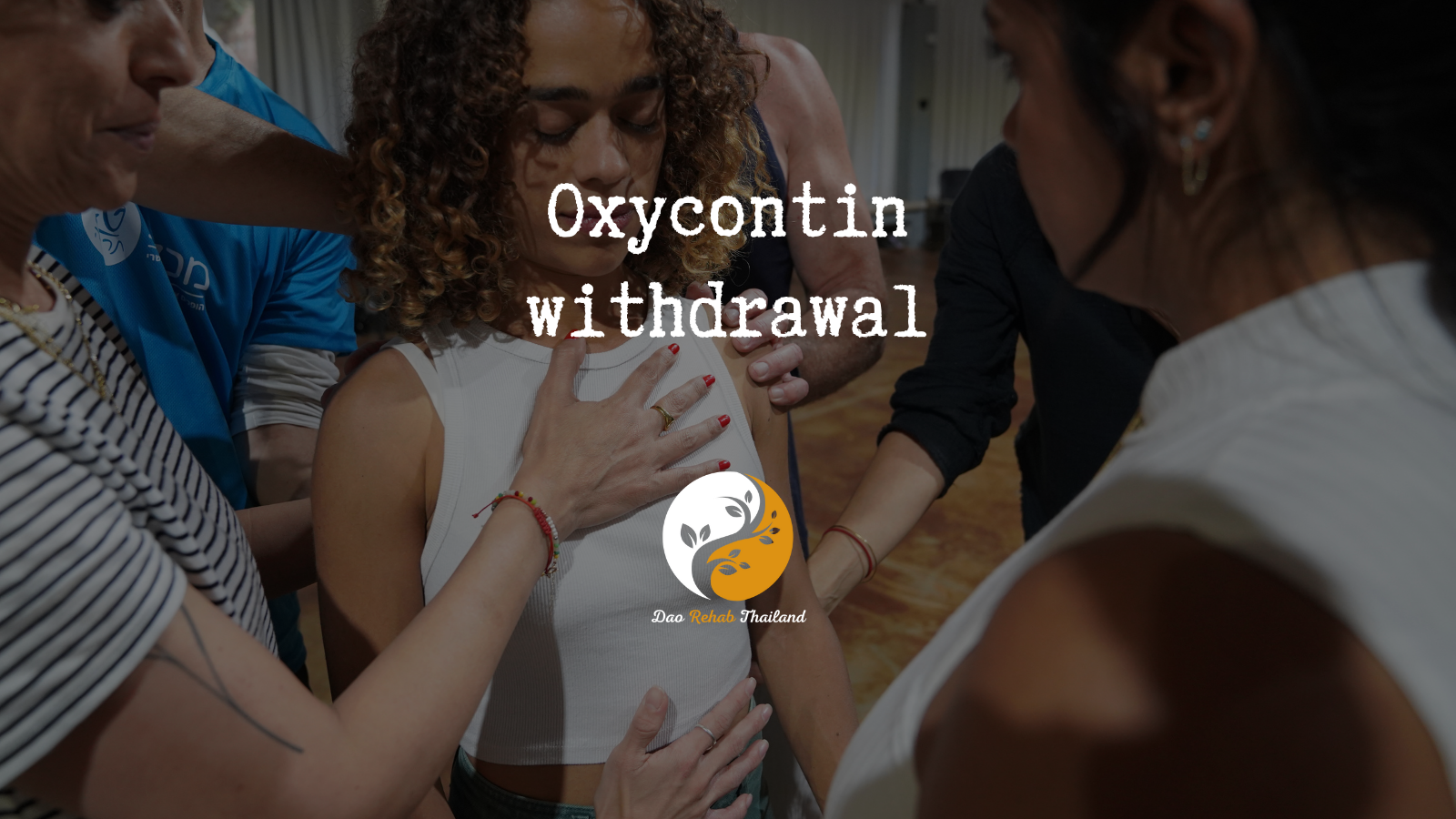
Oxycontin withdrawal-Holistic rehab in Thailand
Oxycontin withdrawal
“Turning the impossible into possible”

"Detox from Drugs at a Luxury Holistic Center in Thailand and Israel"

Oxycontin withdrawal
OxyContin is the brand name for the drug oxycodone, a strong opiate painkiller used medically to treat moderate to severe pain. Here is a historical overview of the drug:
"Holistic Center for Trauma, Addiction, and Mental Imbalance Treatment in Thailand"
“Come to the beginning of your journey to freedom from addiction to alcohol, drugs, and pills, and rediscover your life within the serene embrace of DaoTherapy Rehab in Thailand—where holistic healing meets empowering recovery.”
DaoTherapy Holistic Rehab
Key Elements of Drugs Detox:
Medical Supervision: Drugs detox must be conducted under medical supervision, as the body may experience withdrawal symptoms. These can include nausea, anxiety, muscle aches, and insomnia. A medical team will monitor and manage these symptoms to ensure the patient’s safety and comfort.
Holistic Therapies:
Holistic Therapies: Many detox programs incorporate holistic therapies such as mindfulness, yoga, and meditation to help individuals cope with stress and anxiety during the detox process. These therapies support the mind-body connection and contribute to overall recovery.
Tapering Process
Tapering Process: Drugs detox often involves a gradual tapering of the drug to reduce withdrawal severity. Doctors will slowly decrease the dosage over time to allow the body to adjust to lower levels of the substance.
Psychological Support:
Psychological Support: Like any addiction recovery process, detox from Drugs includes psychological support. This can involve counseling, therapy, or support groups to address the mental and emotional aspects of addiction.
Post-Detox Treatment:
Post-Detox Treatment: After completing detox, continuing treatment is crucial to prevent relapse. This often includes participation in ongoing therapy, group support, and the development of new coping strategies to maintain sobriety.
A historical overview of the development of OxyContin and its use:
OxyContin is the brand name for the drug oxycodone, a powerful opiate painkiller used medically to treat moderate to severe pain. Here is a historical overview of the drug:
Development and Marketing
1995: OxyContin was developed by Purdue Pharma and released to the US market. The drug was designed to provide sustained release of oxycodone, so that it would provide pain relief for a longer period of time compared to other oxycodone-containing drugs.
1996: Aggressive marketing of OxyContin began by Purdue Pharma, which emphasized the benefits of sustained release and claimed that the risk of addiction was lower than other opiate drugs.
The onset of the addiction crisis
Early 2000s: Over time, it became clear that OxyContin was associated with high risks of addiction and abuse. Many people began using the drug for non-medical reasons, leading to severe addiction and an outbreak of overdose deaths.
2007: Purdue Pharma was sued by the US Department of Justice for misleading information it disseminated about the drug’s addiction risks. The company was forced to pay fines of $600 million.
Consequences and corrective actions
2010: Purdue Pharma changed the formula of OxyContin to make it less convenient to crush, inject, or snort, in an attempt to reduce abuse.
2020: Following additional lawsuits and a large number of deaths, Purdue Pharma declared bankruptcy and reached a legal settlement in which it paid billions of dollars in compensation to those affected by the opioid crisis.
OxyContin around the world
Outside the United States, OxyContin is also available and used to treat pain, but its use is more strictly monitored due to the high risks of addiction and abuse.
Effects and Public Debate
The opioid crisis in the United States has led to widespread public debate about the conduct of pharmaceutical companies, the supervision of prescription drugs, and the need for a balanced approach to pain management while preventing addiction.
OxyContin is a prime example of the importance of supervising prescription drugs and awareness of their potential risks, especially drugs with a high potential for addiction.
OxyContin Withdrawal: What you need to know about OxyContin withdrawal, what are the causes of addiction to prescription pills:
The causes of addiction to prescription drugs are complex and vary from person to person, and include a combination of genetic, psychological, environmental, biological, and personal factors.
Genetic factors:
Genetic predisposition: Some people are born with a genetic predisposition to addiction. Studies show that there is a genetic inheritance that increases the risk of addiction.
Families with a history of addiction: Those who have parents or first-degree relatives who have struggled with prescription drug addiction may be at higher risk for addiction.
Doctor-prescribed treatment to prevent pain and addiction while developing tolerance and increasing use of the prescription drug
Subutex withdrawal: Psychological factors:
Mental disorders: People who suffer from depression, anxiety, personality disorders, or post-traumatic stress disorder (PTSD) may turn to drugs to cope with the symptoms of these conditions.
Low self-esteem: A sense of low self-esteem can lead to drug use as a way to escape a painful reality or to improve their sense of self-worth.
Stress and mental strain: People who experience chronic stress or increased mental strain may use drugs to relieve stress.
Feelings of inferiority and dysfunction are another psychological factor that can contribute to prescription drug addiction. We will detail this in the context of psychological factors for addiction:

contact us
Contact us with your questions
We would love to speak with you! Feel free to reach out with any questions.

get in touch
Schedule a free consultation
Schedule a free consultation with our team and let’s make things happen!
Characteristics of Oxycontin addiction:
Addiction to OxyContin, like any other opiate, is characterized by a number of physical and psychological characteristics. Here is an overview of the most prominent characteristics:
Physical Characteristics
Tolerance: The need for increasing doses of the drug to achieve the same effect. The body becomes accustomed to the presence of the drug and develops a tolerance to it.
Withdrawal Symptoms: When the drug is stopped or the dose is reduced, withdrawal symptoms appear. These symptoms can include muscle pain, fever, chills, nausea, vomiting, diarrhea, fatigue, and anxiety.
Continued Use Despite Harm: The person continues to use OxyContin despite being aware of the health, mental, or social harm that is being caused to them as a result.
Mental and Behavioral Characteristics
Craving: A strong urge or desire to use the drug. This feeling can be uncontrollable and cause the person to seek the drug at all costs.
Loss of Control: Difficulty or inability to control the amount of drug use, including taking larger doses or using it more frequently than planned or medically required.
Neglecting Responsibilities: Neglecting family, social, or professional obligations because of drug use.
Preoccupation: Constant thoughts about obtaining the drug, using it, and the consequences of using it. The person may devote a significant amount of time and resources to obtaining and using the drug.
Mental and Health Effects
Depression and Anxiety: OxyContin addiction can lead to mental health problems such as depression, anxiety, and feelings of hopelessness.
Damage to body systems: Long-term use of OxyContin can cause damage to the liver, kidneys, and other body systems.
Overdose risk: Due to high tolerance, people may take very high doses of the drug, which increases the risk of overdose and death.
Common side effects:
Oxycontin, like any opiate medication, can cause various side effects. Here is a list of possible side effects of Oxycontin:
Common side effects
1. Drowsiness and fatigue: Feeling very tired, prone to drowsiness or sleepiness during the day.
2. Constipation: One of the most common side effects of opiates, including Oxycontin, is constipation.
3. Nausea and vomiting: Feeling sick and having the urge to vomit, especially at the beginning of treatment or after increasing the dose.
4. Dizziness: Feeling dizzy or light-headed.
5. Pruritus: An itchy sensation on the skin, which can be mild to severe.
More serious side effects
1. Respiratory depression: One of the biggest dangers of using Oxycontin is a decrease in respiratory function, which can lead to difficulty breathing or even death in severe cases.
2. Mood swings: Anxiety, depression, sudden mood swings, or an unexplained feeling of euphoria.
3. Confusion and lack of concentration: Feeling confused, having memory problems, or having difficulty concentrating.
4. Hypotension: A drop in blood pressure, which can cause a feeling of weakness or fainting.
5. Dependence and addiction: High risk of addiction and dependence on the drug, especially with prolonged use or high doses.
Rare but serious side effects
1. Anaphylaxis: A severe allergic reaction that includes difficulty breathing, swelling of the face, lips, or throat, and a feeling of choking. A medical emergency that requires immediate treatment.
2. Paralytic Ileus: A serious condition in which intestinal motility stops, which can cause severe pain, bloating, and severe constipation.
Drug Interactions
Oxycontin can cause drug interactions when taken with other medications, especially medications that depress the central nervous system such as anti-anxiety medications, sleeping pills, or other pain medications.
Risk of Overdose
An overdose of Oxycontin can be fatal and can cause respiratory depression, a sharp drop in blood pressure, loss of consciousness, and even death. The drug should only be used under medical supervision and avoid increasing the dosage without medical advice.
It is important to remember that all side effects should be reported to the attending physician, especially if they are severe or persistent. The use of Oxycontin requires close medical monitoring and individual adjustment of the dosage according to the needs and health condition of the patient.
Information about Oxycontin and its mechanism of action
OxyContin, which contains the active ingredient oxycodone, is an opiate painkiller that acts on the central nervous system. Here is an explanation of how OxyContin works:
OxyContin’s mechanism of action
1. Binding to opiate receptors: Oxycodone works by binding to opiate receptors in the brain and spinal cord, primarily the μ-opioid receptors. These receptors are part of the central nervous system and play a key role in regulating the sensation of pain.
2. Activation of myoreceptors: When oxycodone binds to these receptors, it activates them and causes the release of chemicals in the brain that reduce the sensation of pain. Activation of these receptors also increases feelings of calm and euphoria, which can contribute to the risk of addiction.
3. Pain Suppression: Oxycodone suppresses the transmission of pain signals from the brain to the spinal cord and the rest of the body by reducing the release of neurotransmitters such as glutamate and other substances involved in pain transmission.
4. Sustained Release: OxyContin is designed to provide sustained release of oxycodone, meaning it releases the active ingredient gradually over time. This provides pain relief for a longer period of time compared to other immediate-release oxycodone medications.
5. Biochemical Changes in the Brain: With prolonged use, oxycodone can cause biochemical changes in the brain, including decreased sensitivity of opiate receptors and decreased levels of neurotransmitters, which can lead to tolerance (requiring higher doses) and physical dependence.
Effects on Body Systems
1. Respiratory System: One of the dangerous effects of oxycodone is respiratory depression. The drug acts on the respiratory centers in the brain, which can lead to a slowdown in breathing and even respiratory arrest at high doses.
2. Digestive system: Oxycodone also acts on the digestive system, which can cause constipation and decreased intestinal motility.
3. Central nervous system: Effects on the central nervous system also include drowsiness, fatigue, dizziness, and a feeling of euphoria.
Advantages and disadvantages of the mechanism of action
Advantages:
– Provides long-lasting relief from severe pain.
– Particularly effective in treating chronic pain and cancer-related pain.
Disadvantages:
– High risk of addiction and dependence.
– Serious side effects such as respiratory depression.
– Potential for fatal overdose.
OxyContin’s mechanism of action, which works by binding to opiate receptors, provides effective pain relief, but also poses significant health risks that require careful use and close medical monitoring.
Physical withdrawal symptoms:
Withdrawal symptoms from Oxycontin, like any other opiate, can be difficult and challenging both physically and mentally. Here is a list of common withdrawal symptoms:
Physical Symptoms
1. Muscle and Joint Pain: A feeling of intense pain in the muscles and joints, often accompanied by cramps.
2. Nausea and Vomiting: A persistent feeling of nausea and frequent vomiting.
3. Diarrhea: Frequent, watery bowel movements, which can lead to dehydration.
4. Increased Sweating: Profuse sweating, often at night, which can cause you to wake up wet.
5. Tremors: Involuntary shaking of the hands and feet.
6. Fever and Chills: Increased body temperature, feeling hot and shivering repeatedly.
7. Tears and Runny Nose: Watery eyes and increased runny nose, as with a cold.
8. Fatigue and weakness: Feeling very tired and generally weak in the body.
Mental and behavioral symptoms
1. Anxiety and restlessness: Feeling of increased anxiety, restlessness, and difficulty relaxing.
2. Depression: Feeling depressed, hopeless, and deeply sad.
3. Cravings: A strong urge to use opiates again.
4. Insomnia: Difficulty falling asleep or staying asleep, leading to fatigue and stress.
5. Irritability: Feeling irritable and having difficulty controlling emotions.
Duration of withdrawal symptoms
1. Initial symptoms: Symptoms can begin within 6-12 hours of stopping use of the drug, especially if there was a strong dependence.
2. Peak symptoms: Withdrawal symptoms usually peak within 72 hours of stopping use.
3. Gradual Weakening: Symptoms begin to gradually weaken after about 5-7 days, but some mental symptoms can last for weeks to months.
Coping with Withdrawal Symptoms
1. Medical Support: Seeking medical support from a doctor or rehab center can help manage withdrawal symptoms. Medication such as methadone, buprenorphine, or naloxone can help reduce symptoms.
2. Emotional Support: Psychological therapy or participating in support groups such as Narcotics Anonymous can help cope with mental symptoms.
3. Proper Nutrition and Hydration: Drinking plenty of water and eating a healthy diet can help cope with physical symptoms.
4. Moderate Exercise: Exercise can help improve mood and reduce some physical symptoms.
5. Rest and Sleep: It is important to try to maintain adequate sleep and rest to help the body recover.
Oxycontin withdrawal symptoms can be very difficult, so it is important to approach this process with caution and with appropriate medical support.
Psychological Support:
Psychological Support: Like any addiction recovery process, detox from Subutex includes psychological support. This can involve counseling, therapy, or support groups to address the mental and emotional aspects of addiction.
Prescription drug withdrawal treatments that exist:
Prescription Drug Withdrawal Methods Around the World
1. Medical Detoxification
Controlled Process: Medical detoxification is the first step in the addiction treatment process. During this process, the use of prescription drugs is stopped under medical supervision, while medications are given to relieve withdrawal symptoms.
Symptom Relief: Medications given can include anxiety-relieving, pain-relieving, and seizure-preventing medications.
2. Psychotherapy Treatment Using the Tau Therapy Method
Cognitive-Behavioral Therapy Using the Tau Therapy Method: This treatment focuses on identifying and changing negative thought and behavior patterns related to addiction.
Behavioral Therapy Using the 12-Step Approach: Used primarily to treat addicts with personality disorders, and teaches coping skills and emotional improvement.
Psychodynamic Therapy: Focuses on exploring the emotional connections and early experiences that led to addiction.
3. Group Therapy and Social Support
Support Groups: Groups such as Narcotics Anonymous (NA) and Alcoholics Anonymous (AA) offer support from former addicts through regular meetings.
Family Therapy: Involves the family in therapy to improve family relationships and support.
4. Alternative and Complementary Therapy from Taotherapy
Meditation and Yoga: These methods help reduce stress, anxiety, and improve self-awareness.
Acupuncture: Often used to reduce withdrawal symptoms and drug cravings.
Proper nutrition and exercise**: Improve overall health and help the body recover.
5. Rehabilitation Programs
Inpatient Rehabilitation Centers: Patients are in a treatment center under full supervision, receiving psychological, medical, and
support care.
Outpatient Rehabilitation: Patients continue to live at home but come to the rehab center for treatment and training.
6. Innovative Technologies
Biofeedback: This technology helps patients learn to control physical reactions and reduce stress.
Virtual Reality Therapy: Virtual reality therapy to recreate situations that trigger drug cravings and learn to cope with them.
7. Holistic and Spiritual Methods
Art and Music Therapy: Used for emotional expression and processing experiences.
12-Step Programs**: Based on spiritual principles and focused on personal responsibility and group support.
Summary
Drug detoxification methods are diverse and vary according to the patient’s needs and local policies. Different approaches are often combined to achieve optimal results, taking into account the patient’s physical, mental, and environmental conditions.
Taotherapy is a multidisciplinary treatment method that focuses on treating addictions:
Taotherapy is a multidisciplinary treatment method that focuses on treating addictions and mental health problems through a holistic approach combined with spiritual, psychological and physiological principles. The method is based on principles of the Chinese philosophy of “Tao”, which emphasizes balance and harmony between the body, mind and spirit. Here is an overview of the Taotherapy method for addiction recovery and treatment:
Basic principles of Taotherapy
1. Balance and harmony:
– Taotherapy focuses on achieving balance and harmony between all components of the person: body, mind and spirit. The assumption is that an imbalance between these components leads to addictions and mental health problems.
2. Tao principles:
– The method is based on the principles of Tao (Way), which guide the patient to strive for a balanced and harmonious life. The Tao philosophy emphasizes living simply, humbly and in accordance with the natural flow of life.
3. Body, Mind, and Spirit:
– Taotherapy sees the person as a whole and integrated whole, and does not focus only on the symptoms of addiction but also on the deeper roots of the problem, such as past traumas, unprocessed emotions, and psychological difficulties.
Components of Taotherapy treatment
1. Spiritual techniques:
– Meditation: Meditation is used as a central tool for treatment, and its goal is to achieve inner calm, mental and spiritual balance, and reduce tension and stress.
– Breathing exercises: Exercises that aim to improve a person’s ability to control breathing and strengthen the connection between the body and mind.
2. Psychological techniques:
– Cognitive-behavioral therapy (CBT): The principles of cognitive-behavioral therapy are combined with the principles of Tao to change harmful thought and behavior patterns.
– Trauma therapy: Working on processing past traumas and releasing unprocessed emotions that can contribute to addiction.
3. Physical activity:
– Yoga and Qi Gong: These practices combine movement, breathing and internal awareness, and aim to strengthen the body, calm the mind and create a sense of balance and harmony.
– General physical activity: Regular physical activity improves physical and mental health and reduces the need for addiction.
4. Proper nutrition:
– Balanced diet: Taotherapy emphasizes the importance of a balanced and healthy diet as a tool for improving physical and mental health.
Advantages of Taotherapy in the treatment of addictions
1. Holistic approach: The method treats the patient as a whole and not just the symptoms, which allows dealing with the roots of the problem.
2. Combination of different techniques: Taotherapy combines a wide range of spiritual, psychological and physiological techniques, which increases the effectiveness of the treatment.
3. Improved quality of life: By achieving balance and harmony, patients experience significant improvements in their quality of life, physical health, and sense of well-being.
Summary
Tao Therapy is a holistic treatment method that combines spiritual, psychological, and physiological principles to treat addictions and mental health problems. The method focuses on balance and harmony between the body, mind, and spirit, and incorporates techniques such as meditation, breathing exercises, cognitive-behavioral therapy, yoga, and qigong, and proper nutrition. The holistic approach of Tao Therapy allows for deep and effective treatment of the roots of addiction and improves the quality of life of patients.








